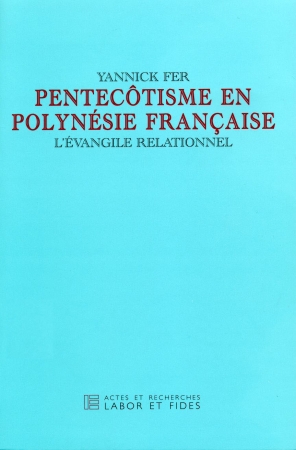
Pentecôtisme en Polynésie française
Le pentecôtisme s’est développé en Polynésie française à partir des années 1960, d’abord au sein de la communauté chinoise, puis dans la plupart des îles de la Société, dans quelques atolls des Tuamotu et aux Marquises. L’expansion rapide du nombre de ses fidèles s’est accompagnée d’un processus de différenciation institutionnelle : des scissions successives ont fait naître plusieurs Églises charismatiques chinoises, puis une Église transculturelle – les assemblées de Dieu de Polynésie française – qui est aujourd’hui la principale Église pentecôtiste polynésienne. En outre, l’action de missionnaires américains et de l’organisation Jeunesse en mission ont contribué à l’émergence d’une pluralité d’expressions pentecôtistes, portée par un réseau d’organisations plus ou moins informelles au sein duquel circulent des croyants largement autonomes.
À partir du cas polynésien, ce livre propose un certain nombre de clés de compréhension du pentecôtisme contemporain, en analysant plus particulièrement le modèle relationnel pentecôtiste et l’articulation entre encadrement institutionnel et autonomisation des individus croyants. Il décrit les mécanismes d’apprentissage d’un « Évangile relationnel » centré sur une communication personnelle avec Dieu et l’évangélisation comme mode de vie, et montre en quoi ce type de socialisation religieuse répond bien aux attentes d’individus détachés des structures traditionnelles d’encadrement social et désireux de « s’en sortir » par eux-mêmes, à travers des choix personnels, donc authentiques.
The rise of Pentecostalism in French Polynesia began in the 60s, first within the Chinese community, then in most of the Society Islands, in a few Tuamotu atolls and in the Marquesas Islands. The fast growth of the believers’ number went with a process of institutional dispersal: successive splits gave birth to several Chinese Charismatic Churches, then to a trans-cultural Church – the Assemblies of God of French Polynesia – that is today the main Polynesian Pentecostal Church. Moreover, the activities of American missionaries and of Youth With a Mission have contributed to the emergence of a plurality of Pentecostal expressions, fostered by a network of more or less official organisations, connected to each other by personal affinities and the circulation of largely independent believers.
From the Polynesian case, this book brings several key-elements for the understanding of contemporary Pentecostalism and analyses more specifically the Pentecostal relational patterns and the combination of institutional control and individual autonomy. It describes how the believers learn a “Relational Gospel” focused on personal communication with God and evangelisation as a way of life and shows to what extent this religious socialisation meets the expectations of individuals turned away from the traditional structures of social control trying to “get out” on their own, by making personal – i.e. authentic – choices.